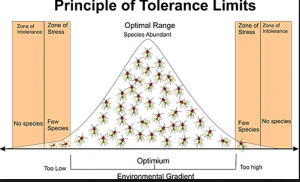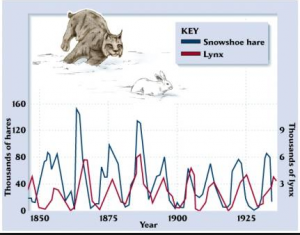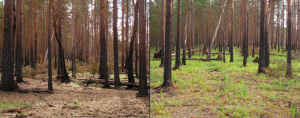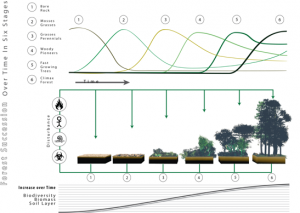Chapter 4.2
Objectives:
- Define niche
- Describe the role competition plays in shaping communities
- How do predation and herbivory shape communities?
- What are three primary ways that organisms depend on each other?
1. Contrast a niche and a habitat p. 99-100
Habitat is the general place where an organism lives. IT is based on an organism’s upper and lower limit of tolerance for every environmental factor
A niche is not only describes what an organism does, but also how it interacts with biotic and abiotic factors inthe environment.
Niche is the range of physical and biological conditions in which a species lives AND the way the species obtains what it needs to survive and reproduce.
.
Tolerance is the ability to survive and reproduce under a range of environmental conditions
Every species has its own range of tolerance.
Resources and niche
a resource can refer to any necessity of life such as water, nutrients, light, food, or space
Physical aspects and niche
abiotic factors needed to survive such as proximity to water or temperature
Biological aspects and niche
biotic factors needed for survival such as when and how an organism reproduces, the type of food it eats, and how it obtains its food
2. Describe the role competition plays in shaping communities
Competitive exclusion principle
https://www.pearsonsuccessnet.com/snpapp/iText/products/0-13-366951-3-tr/media/mlbio10a1737.png
Example
Virtual lab link
http://www.mhhe.com/biosci/genbio/virtual_labs_2K8/labs/BL_19/index.html
Link to diagram in text
https://www.pearsonsuccessnet.com/snpapp/iText/products/0-13-366951-3-tr/media/mlbio10a1736.png
Questions:
Which organism, red or blue, is more likely to survive when living together? How do you know?
Invasive species:
Asian carp:
http://www.youtube.com/watch?v=rPeg1tbBt0A
UNL zebra mussels 5:12
3. How do predation and herbivory shape communities?
Keystone species a single species that is not usually abundant in a community yet exerts strong control on the structure of a community
Otters primarily feed on sea urchins. Sea urchins are herbivores that eat kelp which form the giant coastal kelp forests.
The otter population was nearly wiped out due to hunting.
Predict the affect on the environment.
Sea Otter 7:19
http://science.kqed.org/quest/2014/02/25/balancing-act-otters-urchins-and-kelp/
Do activity Deer: Predation or starvation
Lynx and Snow shoe hare
4. What are 3 primary ways that organisms depend on each other?
Symbiosis
Video: Symbiotic relationships
www.youtube.com/watch?v=zSmL2F1t81Q
Chapter 4.3 Succession
Objectives:
Describe how ecosystems recover from a disturbance?
Compare succession after a natural disturbance with succession after a human-caused disturbance
Ecological succession is a series of more or less predictable changes that occur in a community over time.
Ecosystems change over time, especially after disturbances, as some species die out and new species move in.
Primary succession
http://www.youtube.com/watch?v=TLpc71YOtcE
Secondary succession
http://www.youtube.com/watch?v=CQ2Xl6ZqzRI
Compare primary and secondary succession
http://www.youtube.com/watch?v=O8-LZdIyUQg
Helpful Review Videos:
Crash course biology
http://www.youtube.com/watch?v=jZKIHe2LDP8
Eerily abandoned places





